Honda’s first production hydrogen-powered fuel cell vehicle, which is set to make its official debut at the Tokyo Motor Show, was previewed in working form at the 2015 Honda Meeting in Japan ahead of the show. The FCV, which was not officially named but is set to be called the Clarity Fuel Cell (the name will officially be revealed at the TMS), led the line at the tech showcase held at the automaker’s Tochigi R&D facility.
Aside from the first live photos, initial details of the car, essentially a dressed-down, showroom version of the FCV Concept shown in Los Angeles last year, were also revealed at the event, and the stats largely follows the numbers announced for the initial study.
The spiritual successor to the FCX Clarity, a lease-only hydrogen-powered vehicle that was introduced in 2007, will take the fight to the Toyota Mirai when it goes on sale in Japan sometime in the first quarter of 2016 (reportedly, at the end of March).
Measuring in at 4,895 mm long, 1,875 mm wide and 1,475 mm tall, the production FCV is just a shade larger than the Clarity (4,845 x 1,845 x 1,470 mm). Visually arresting, even if a bit gangly-looking (though nowhere near as that presented by the Mirai), there’s a fair bit of heft to the physical shape as the photos suggest.
The biggest advancements however have come underneath all the skin – as previously reported, the car features a new Proton Exchange Membrane Fuel Cell (PEMFC) stack that is 33% smaller than before (but weighing much the same as previously, according to the Honda engineers).
This reduction is stack packaging size means the car’s entire hydrogen powertrain can now be consolidated under the bonnet, freeing up space to present a full five-seat interior, which is one more than the Mirai (and for that matter, the Clarity). The company says that both the technical package and skeleton structure of the car has significant promise of deployment on other models down the line.
When it eventually goes on sale, the production FCV will also be available with an external power feeding inverter, which will lend it the ability to be a mobile power plant, offering an invaluable source of electricity in emergencies or the event of a disaster.
Despite the reduction is size, power output is up, the new unit offering 130 kW at 500 volts compared to the 100 kW at 300 volts produced by the Clarity. Its output density of 3.1 kW per litre, meanwhile, betters the Clarity’s 1.85 kW per litre by a staggering 60%. Torque is also up, with 300 Nm of twist compared to the 256 Nm on the Clarity.
Operating range has also been improved significantly. The Clarity could do around 570 km, courtesy of a 35 MPa hydrogen tank. The new FCV is claimed to be able to do more than 700 km, thanks to a larger 70 MPa high-pressure hydrogen tank, which can be refilled in just three minutes, about the same as a regular petrol fill-up.
Despite the sizeable tank, there’s still enough in the way of boot space to take three golf bags, Honda says – the rear cargo area looks sizeable enough, though fitting more than one large bag might be a bit of a pinch.
No sacrifice to rear seat space, and it’s actually quite roomy, as noticed while doing interior photography of the car – the light tone of the interior trim obviously does its bit too in adding a better perception of volumetric scope. Elsewhere, the presentation of the front half of the cabin is clean, and materials feel decent to the touch.
The delivery wasn’t all static. A short sampling offered a glimpse of the promise – glimpse in this case being a single-pass, straight-line run over a kilometre-long loop. While nothing beyond low-speed accelerative qualities could really be gauged, the initial report card scores quite nicely.
Inevitably, there’s no escaping the perception of weight, but the system offers the car decent take-up with progressive throttle input. The FCV itself is quietly poised, refined and rather likable. More on the Honda FCV when it makes its debut in Tokyo tomorrow.
Looking to sell your car? Sell it with Carro.

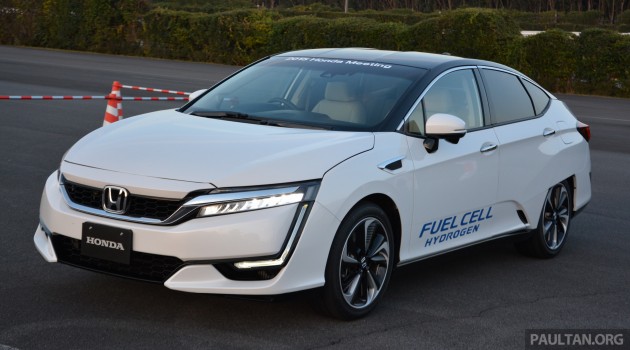
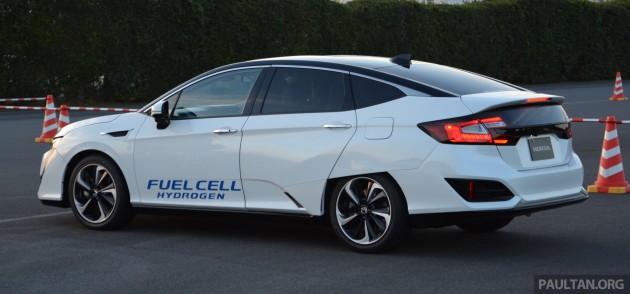






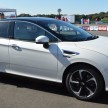
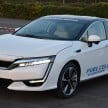
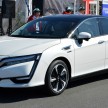
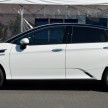
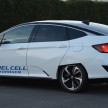
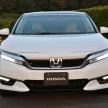
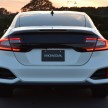
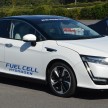
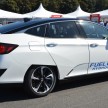
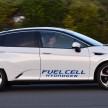
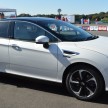
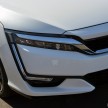
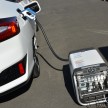
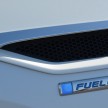
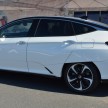
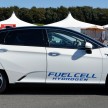
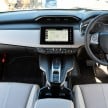
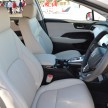
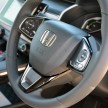
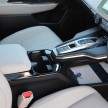
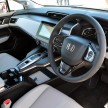
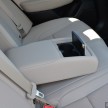
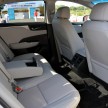
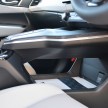
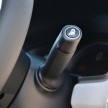
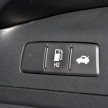

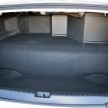
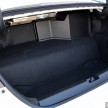
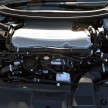
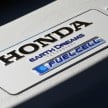

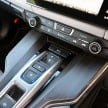

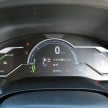
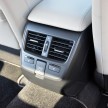
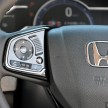
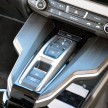
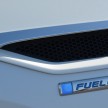
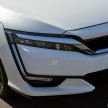
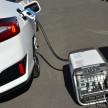
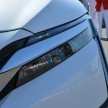

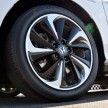
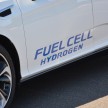
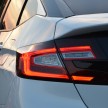
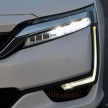
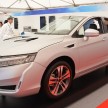
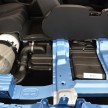
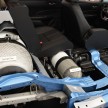
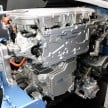
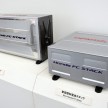
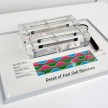
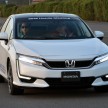
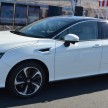
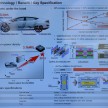
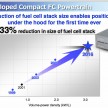
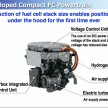
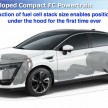
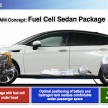


















Don’t you think this Honda FCV looks like a retard brother of 2016 Civic? Haha..I guess 2016 Civic design cues derived from this FCV.
we have a winner of the ugly car design contest!!
Honda news is on the roll today!
1) 2017 Honda Civic to get new 1.0 and 1.5 VTEC Turbo
2) Honda FCV production
3) 2017 Acura NSX
4) Honda mulls all-electric sports car to sit below NSX
5) 2017 Honda Civic for Europe – 1.0 litre VTEC Turbo and 201 hp 1.5 litre Turbo
6) New Honda 10-speed automatic transmission detaile
Cool, I liked the Clarity design
Looks very alike with the new launched Civic
Honda design looks way better than Toyota nowadays
Honda’s design looks way better than Toyota nowadays
From choosing between Toyota and Honda fuel cell car. Honda is my best choice for they are the one who 1st come out with this tech and had a longer test period in real world than Toyota fuel cell car. And this car still have the Honda FCX design language which is sexy.
honda not the first bro. apparently your knowledge on automotive technology is very low.
toyota began prototype in 1997 and made first limited production in 2001/02 with FHCV.
go read on from google…
The concept of the fuel cell was first demonstrated by Humphry Davy in 1801, but the invention of the first working fuel cell is credited to William Grove, a chemist, lawyer, and physicist. Grove’s experiments with what he called a “gas voltaic battery” proved in 1842 that an electric current could be produced by the electrochemical reaction of breaking the hydrogen atom. The first modern fuel cell vehicle was a modified Allis-Chalmers farm tractor, fitted with a 15 kilowatt fuel cell, around 1959. The Cold War Space Race drove further development of fuel cell technology. Project Gemini tested fuel cells to provide electrical power during manned space missions. Fuel cell development continued with the Apollo Program. The electrical power systems in the Apollo capsules and lunar modules used alkali fuel cells. In 1966, General Motors developed the first fuel cell road vehicle, the Chevrolet Electrovan.It had a PEM fuel cell, a range of 120 miles and a top speed of 70 mph. There were only two seats, as the fuel cell stack and fuel tanks took up the rear portion of the van. Only one was built, as the project was deemed cost-prohibitive. General Electric and others continued working on PEM fuel cells in the 1970s.
Fuel cell stacks were still limited principally to space applications in the 1980s, including the Space Shuttle.However, the closure of the Apollo Program sent many industry experts to private companies. By the 1990s, automobile manufacturers were interested in fuel cell applications, and demonstration vehicles were readied. In 2001, the first 700 Bar (10000 PSI) hydrogen tanks were demonstrated, reducing the size of the fuel tanks that could be used in vehicles and extending the range
That’s a great history lesson you’ve thought me. Sorry that I’m no history buff. But I can tell what I’ve know in the automotive news that Honda is actually the only company which tested the fuel cell car in the public road and commercialized since 2002 in which certified by U.S. EPA. (1999 is Honda first fuel cell car), unlike Toyota which comes out with a prototype in 1997 FCHV are a Fuel Cell Hybrid which still basically an EV with fuel cell charger (not pure fuel cell vehicle like Honda Ultracapacitor did initially).
Thanks to you, I’ve begin to understand the fuel cell car tech in detail and in my humble opinion, Honda still win this for the Toyota Mirai or its 2008 ancestry, is using the Ultracapacitor concept in which Honda started since year 2002.
Reference from wiki. FCX, FCHV, FCHV-ADV
What’s different between Honda Ultracapacitor capacitor and Toyota FCHV is Honda doesn’t need to replace the battery when the lifespan reached. The FCX will generator will generate power to the capacitor and supplying the power to the wheel. The capacitor will not store electricity when your foot is not flooring the throttle. Toyota FCHV in other hand still functions like an EV. And the nickel battery will store the energy from the fuel cell generator, similar to Prius and Insight system, the generator replace by an engine.
looks is subjective, but 1 thing for sure, this car looks better then Toyota Mirai, inside and outside